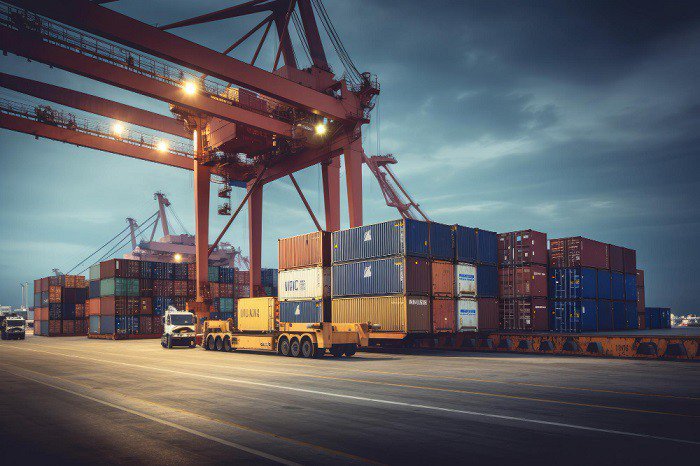
In the realm of global trade, India holds a significant position, both as a major exporter and importer. However, the latest data from March 2024 presents a nuanced picture. According to the latest report from the Economic Times, India’s exports have witnessed a slight decline of 0.7% during this period. This comes alongside another noteworthy development: the trade deficit has hit an 11-month low. As economists and industry experts delve into the intricacies of these figures, it becomes imperative to analyze the factors contributing to this trend and its potential implications for India’s economy.
The Numbers at a Glance: A Closer Look at the Data
India’s exports have dipped marginally by 0.7% in March, signaling a deviation from the previous growth trajectory. Despite the decline in exports, the trade deficit has reached its lowest point in 11 months. This suggests a balancing act in India’s trade dynamics.
Exploring the Factors Behind the Decline in Exports
Several factors contribute to the decline in exports witnessed in March. Understanding these factors is crucial for contextualizing the economic scenario.
Global Supply Chain Disruptions
The ongoing conflict between Russia and Ukraine has disrupted global supply chains, affecting various industries worldwide. India, being a part of these interconnected chains, has felt the repercussions, leading to a slowdown in exports. Supply chain bottlenecks, exacerbated by the lingering effects of the COVID-19 pandemic, have hindered the smooth flow of goods. Delays in production and transportation have impeded India’s export activities, contributing to the decline observed in March.
Fluctuating Commodity Prices
Fluctuations in commodity prices, including crude oil and metals, have a direct impact on India’s export earnings. The unpredictable nature of these markets can lead to fluctuations in export revenues, as seen in the recent data. India’s export basket is heavily reliant on commodities such as petroleum products, gems, and jewelry. Any adverse movement in commodity prices can adversely affect India’s export performance.
Policy Reforms and Trade Agreements
Alterations in trade policies, both domestically and globally, can influence export figures. Changes in tariffs, duties, and trade agreements may have contributed to the observed decline in March. India’s trade relations with various regions and countries play a pivotal role in shaping its export performance. Shifts in regional dynamics, such as changes in demand or trade agreements, can impact export volumes.
The Silver Lining: Analyzing the Trade Deficit
While the decline in exports may raise concerns, the simultaneous reduction in the trade deficit presents a silver lining.
Improvement in Balance of Payments
A lower trade deficit indicates that India is importing fewer goods relative to its exports. This suggests an improvement in the balance of payments, which is crucial for maintaining economic stability. Boost to Domestic Manufacturing: A decline in the trade deficit may signal a strengthening of domestic manufacturing capabilities. Reduced reliance on imports can incentivize domestic production, leading to long-term benefits for the economy. Potential for Export Diversification: The focus on reducing the trade deficit could drive efforts towards diversifying India’s export basket. Exploring new markets and product categories can enhance India’s resilience to external shocks and foster sustainable growth.
The Road Ahead: Strategies for Revitalizing India’s Exports
As India navigates through the current economic landscape, certain strategies can be employed to revitalize its exports and ensure long-term sustainability. Investment in Infrastructure: Improving infrastructure, particularly in transportation and logistics, can mitigate supply chain disruptions and enhance export efficiency. Promotion of Value-added Exports: Encouraging value addition in exports through technological innovation and skill development can enhance India’s competitiveness in global markets. Strengthening Trade Partnerships: Fostering stronger trade partnerships with key markets and regions can open up new avenues for export growth and reduce dependency on traditional markets. Policy Support: Providing policy support, such as export incentives and trade facilitation measures, can incentivize exporters and stimulate export activities.
Navigating the Complexities of Global Trade
In conclusion, the recent decline in India’s exports amidst a reduced trade deficit underscores the intricacies of global trade dynamics. While external factors such as supply chain disruptions and commodity price fluctuations pose challenges, there are also opportunities for growth and resilience. By implementing strategic measures and fostering a conducive business environment, India can navigate through these challenges and emerge stronger in the global marketplace. As the country continues its journey towards economic recovery and sustainable development, proactive measures and innovative strategies will be key to unlocking its export potential and driving inclusive growth.





 Get instant quote
and compare offers in real time
Get instant quote
and compare offers in real time